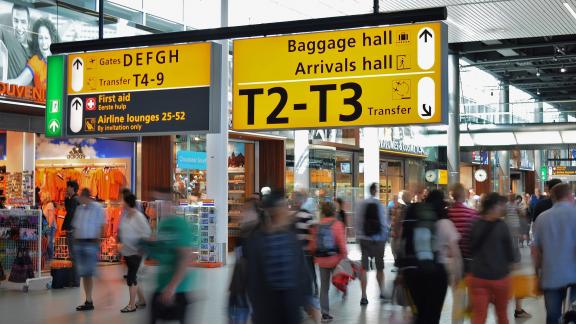
There are six employment check standards that employers must undertake as part of their recruitment processes.
Read the background information about the purpose of the standards, who they apply to and how to meet compliance. We also recommend viewing our frequently asked questions.
We regularly review and update the standards in line with policy and legislation changes. A summary of updates history can be found at the bottom of this page.
This standard outlines the type of checks and documentary evidence which are required in order to verify a candidate's legal right to work in the UK.
Introduction
1.1 Importance of right to work checks
1.1.1 A right to work check determines whether an individual has the legal right and permission to work in the UK.
1.1.2 Employers risk facing a civil penalty if they are found to be employing an illegal worker and they haven’t carried out a correct right to work check. A civil penalty can be anything up to £60,000 per illegal worker. Criminal sanctions may also apply where the employer is found to have knowingly appointed or continues to employ an individual who does not have a right to work in the UK.
1.1.3 The Immigration, Asylum and Nationality Act 2006 (amended by the Immigration Act 2016) provides employers with a statutory excuse against a civil penalty where they can clearly demonstrate that they have carried out all the necessary checks to mitigate any risks of employing illegal workers.
Minimum requirements
2.1 Who requires a right to work check and when?
2.1.1 Employers must carry out a right to work check on all successful applicants before they can be allowed to take up employment.
2.1.2 No assumption should be made about an individual’s right to work on the grounds of colour, race, nationality, ethnic or national origins, accent, or the length of time they have been resident in the UK.
2.1.3 In the event that an employer is found to be employing an illegal worker, they would not be liable for a civil penalty if they can prove they conducted the appropriate checks set out in Home Office guidance. This is called a statutory excuse.
2.1.4 There are three types of right to work check:
- a manual right to work check
- an online Home Office right to work check (non-British and non-Irish citizens)
- a right to work check using Identity Document Validation Technology (IDVT) via the services of a digital provider (British and Irish citizens with a valid passport or Irish passport card only). These providers will often be referred to as a Digital Verification Service (DVS).
2.1.5 The type of check an employer should conduct will depend on the status of the individual you intend to employ and, in some circumstances, the individual’s preference. See sections - 2.2 online checks, 2.3 using an IDSP and 2.4 manual checks - for more information.
2.2 Online Home Office checks
2.2.1 Non-British and non-Irish nationals wishing to work in the UK can confirm their right to work through the Home Office online checking service. The digital service currently supports checks in respect of those who hold an eVisa; such as those granted under the EU Settlement Scheme and the point-based immigration routes.
2.2.2 Please note, most physical immigration documents have been phased out to be replaced with eVisas - this is a digital record of a person’s immigration status. However, to support the transition to eVisas, where a person has a valid immigration status they can use their expired biometric residence permit (BRP) issued by the Home Office to generate a share code (using the online service) to prove their right to work, for up to 18 months beyond the expiry date of the BRP. Individuals are encouraged to register for a UKVI account to allow them access to their eVisa.
2.2.3 Individuals must provide a prospective employer with a share code using the Home Office view and prove your immigration status: get a share code service (also known as the view and prove service). For right to work checking purposes the individual must select to generate a share code under the category to prove my right to work. The employer can use the individual’s share code and their date of birth to verify their right to work by using the check a job applicant’s right to work: use their share code service. The individual’s status screen will show a photograph and the necessary information required to obtain a statutory excuse, including any restrictions attached to the individual’s immigration permission.
2.2.4 Employers must retain a record of the check as a PDF or screen print for the duration of the individual’s employment and for a further two years after their employment ends. The file must then be securely destroyed.
2.2.5 Follow up right to work checks must be undertaken where the individual’s right to work status indicates that they have limited leave to remain, evidenced by an expiry date.
2.2.6 Further details about how the Home Office online right to work checking service works can be found on the gov.uk website.
2.2.7 Please note, when you are checking an eVisa to confirm a individual’s identity, this must be done separately to the right to work check. The individual will need to generate a different type of share code in order that you are provided with the correct information for identity checking purposes. For guidance on this process, please refer to the identity checks standard and our FAQ page.
2.3 Using an Identity Service Provider (IDSP)
2.3.1 British and Irish nationals holding a valid passport or Irish passport card are able to confirm their right to work through the use of Identity Document Validation Technology (IDVT) via the services of an identity service provider. The legislation for this took effect from 06 April 2022. The digital checks allow employers to verify eligible British and Irish nationals’ right to work, via a third party provider, without having to check physical documents. The Home Office recommends that employers utilise the services of a certified provider.
2.3.2 A list of certified providers is available on the gov.uk website and employers interested in procuring a certified provider can engage directly with those providers.
2.3.3 Employers will still be required to confirm that the photographic image of the employee provided is a true likeness, to ensure that the individual who is the subject of the check is the individual presenting themselves for work. This can be in person or via a video call, as outlined in Home Office guidance. You must also retain a clear copy of the identity check output for the duration of employment and for two years after the employment has come to an end.
2.3.4 There will be occasions where a digital right to work check for British and Irish citizens will not be possible and you will be required to carry out a manual check of the document described in section 2.4 to obtain a statutory excuse e.g. if an individual is reliant upon an expired British or Irish passport.
2.3.5 Should an employer choose to use a digital provider they will need to become familiar with the regulations, and to ensure that staff involved in arranging identity and right to work checks have the necessary training on for example, what information they must obtain from the third party to confirm a candidate’s identity; what the information can be used for; and what other requirements they still need to fulfil to establish eligibility to work.
2.3.6 Find out more about verifying right to work digitally via a certified digital provider in the Home Office employer’s guide to right to work checks.
2.4 Manual checks
2.4.1 It will not be possible to conduct an online or digital right to work check in all circumstances, as not all individuals will have an immigration status that can be checked online or digitally, or in some circumstances an individual may choose not to demonstrate their right to work using the online or digital services. In such cases employers should conduct a manual check.
2.4.2 When conducting manual checks, there are three steps that employers must take to confirm an individual has the right to work in the UK:
- Obtain the person’s original documents from List A or List B of the acceptable documentary evidence as outlined in section 2.5.
- Check all documentary evidence with the holder to verify that the documents are genuine, that the individual is the rightful owner of those documents, and they are permitted to do the type of work being offered.
- Make a clear copy of all documentary evidence seen and record the date of the check (documents may be photocopied or scanned and uploaded onto the electronic staff record (ESR) or other internal HR system).
2.4.3 Employers should retain all copies securely for the duration of the individual’s employment, and for at least two years after the employment has come to an end. Copies of personal information must only be retained for the purpose of establishing a statutory excuse and retained in line with data protection laws. This includes ensuring you have a documented lawful basis for processing any data as per the Information Commissioner’s Office (ICO) guidance.
2.4.4 Employers will need to refer to Home Office guidance which can be found on the gov.uk website:
2.5 Acceptable right to work documents
2.5.1 The Home Office provides guidance which outlines the type and range of acceptable right to work documents (List A and List B) that must be obtained and verified to prove an individual’s right to work in the UK.
2.5.2 Employers must see:
- one document or a combination of documents as specified in List A
OR
- one document or a combination of documents as specified in List B.
2.5.3 You must not accept any other documents or combination of documents other than those stipulated by the Home Office in Lists A and B to retain a statutory excuse.
2.5.4 All documents must be original and show that the holder is entitled to do the type of work being offered.
2.5.5 Those that contain an expiry date should be valid and current. Photocopies and documents downloaded from the internet must not be accepted. There are a small number of exceptions to the valid and current rule, which include an out-of-date UK passport.
2.5.6 An indefinite leave to remain stamp in an expired passport must not be accepted. Where an individual presents an expired passport with indefinite leave to remain, employers should provide the individual with opportunity to obtain and provide current, eligible documents.
2.5.7 Legacy document holders who have been granted settlement (also known as indefinite leave to remain) in the UK, such as those with a wet-ink stamp in their passport or a vignette sticker, are encouraged to make a free No Time Limit (NTL) application online. This helps to re-establish their identity with the Home Office so that a UKVI account can be created, enabling access to digital evidence of their status.
2.5.8 Please consult the most up-to-date UK Visas and Immigration employer’s guide for further information if you are unsure what can be accepted.
2.6 Frequency of checks
2.6.1 Employers are required to carry out an initial right to work check to prevent illegal working on all individuals they intend to employ. Once you have completed this check, you will be required to carry out follow-up right to work checks if the individual’s permission to be in the UK and to do the work in question is time-limited to ensure you retain a statutory excuse. There are two categories of statutory excuse:
- Continuous excuse - this is where an individual can provide one document or combination of documents from List A and there are no restrictions on their right to work in the UK. Once documents from List A have been checked, copied, and retained, you do not need to conduct any repeat checks on the worker for the duration of their employment. This also applies where documentary evidence shows that the individual has indefinite leave to remain in the UK.
- Time-limited excuse - this is where an individual can provide a document or combination of documents from List B which means they have time-limited and restricted right to work in the UK. The individual’s permission to work in the UK ends when their visa or other right to work document expires. Some visas carry restrictions as to the number of hours the individual can work and/or the type of work they can do. This means that you will need to conduct a repeat check before the expiry date of the visa if you wish to continue to employ them. The frequency of any follow-up checks depends on whether the documents presented are from Group 1 or Group 2 in List B.
| Document type | Excuse type | Frequency of checks |
| List A | Continuous | Before employment starts only. No further checks are required for the duration of their employment. |
| List B – Group 1 | Time-limited | Before employment starts and again when permission expires (as indicated via the initial check). |
| List B – Group 2 | Time-limited | Before employment starts and again after six months, as set out in the Positive Verification Notice (see section on in-time applications below). |
2.6.2 It is crucial that employers record the date of any follow-up checks required on employees who have limited leave to remain in the UK, and that these checks are completed at the correct time to retain a statutory excuse.
2.6.3 On the date on which your employee’s permission expires, to continue to employ them you must be reasonably satisfied they:
- have submitted an in-time application to extend or vary their permission to be in the UK to the Home Office
Or
- have made an appeal against an immigration decision on that application which is outstanding.
In such cases, your statutory excuse will continue for a further period of up to 28 calendar days from the expiry date of the initial check to enable you to obtain a positive verification notice (PVN) from the Employer Checking Service (ECS) or carry out a Home Office online check. This ‘grace’ period does not apply to checks carried out before employment commences. In such circumstances, you should consider delaying employment of the individual until such time you are able to carry out a prescribed check or you receive a six-month PVN from the ECS.
During either the initial 28 calendar days ‘grace’ period, or the six-month PVN period your employee provides evidence that their case has been determined with permission to stay granted, you can maintain a statutory excuse for the duration of their immigration permission by conducting a check in the normal way. See further information about when to conduct follow up checks in Home Office right to work check guidance.
2.6.4 Where relevant, it should be made a contractual condition for the individual to maintain their right to work status for the full term of employment. They must immediately notify the employer if their immigration status changes, or they cease to have the right to work in the UK.
2.7 In-time applications
2.7.1 An employee’s application for further immigration permission to stay in the UK must be made before their existing permission expires for it to be deemed in-time. Any right to work will continue until the outcome of the application is determined.
2.7.2 Employers must:
- Seek acceptable proof of an in-time application being made, such as a Home Office acknowledgement letter or proof of postage which indicates that an application was sent to the Home Office.
- Use the Home Office’s online employer checking service to confirm that an application has been received and the individual continues to have a right to work while their application/appeal is being determined. The Home Office advises to wait for 14 days after the individual has submitted their application or appeal to ensure this has been registered. It is employers’ responsibility to inform prospective or current employees when they are carrying out a check with the service.
2.7.3 The Home Office will issue you with a positive verification notice (PVN) which confirms that the named individual is permitted to carry out the type of work in question. PVNs are valid for a period of six months from the issue date. If in the six-month PVN period your employee provides evidence that their case has been determined with permission to stay granted, you can maintain a statutory excuse for the duration of their immigration permission by conducting a check in the normal way.
2.7.4 Employers are required to take copies of all documentary evidence, including the PVN, to retain a statutory excuse.
2.8 Validating, copying, and storing documents
2.8.1 When validating documents presented by individuals, you must check that:
- photographs and dates of birth are consistent across documents and with the appearance of the individual
- expiry dates for permission to be in the UK have not passed
- there are no work restrictions to prevent the individual doing the type of work being offered
- the documents are genuine, have not been tampered with and belong to the holder; and
- documents with different names can be explained by providing further evidence (for example, marriage/civil partnership certificate, divorce certificate, deed poll, adoption certificate or statutory declaration).
2.8.2 Employers must keep a record of every document checked. This can be hardcopy or a scanned copy in a format which cannot be manually altered. A record of the date on which a check was made must be retained, either by making a dated declaration on the copy (using the wording ‘the date on which this right to work check was made: [insert date]’ or in a separate record, held securely, which can be shown to the Home Office upon request to establish your statutory excuse. For Home Office purposes, simply writing a date on the copy document does not confirm that this is the actual date when the check was undertaken.
2.8.3 In the case of a passport or other travel document, the following parts must be photocopied or scanned:
- Passports: any page with the document’s expiry date, nationality, date of birth, signature, leave expiry date, biometric details and photograph, and any page containing information indicating the holder has an entitlement to enter or remain in the UK and undertake the work in question.
- All other documents: the document in full, including both sides of an Immigration Status Document and an Application Registration Card.
2.8.4 Keep a record of every document you have copied in line with data protection laws. Copies of the documents should be kept securely for the duration of the individual’s employment and for a further two years after their employment has ceased. The person taking the copy must sign and date it to show it has been certified.
Failure to carry out checks
3.1.1 Failure to carry out the necessary checks can result in the Home Office issuing the employer with a civil penalty of £60,000 per illegal worker or imposing up to five years’ imprisonment and/or an unlimited fine where they are found to have knowingly employed an illegal worker.
3.1.2 Migrants found to be working illegally may also face a maximum custodial sentence of six months and/or an unlimited fine (in England and Wales). Wages paid to an illegal migrant will be recoverable under the Proceeds of Crime Act 2002.
3.1.3 In certain circumstances, immigration officers can close an organisation for up to 48 hours or place it under special compliance requirements where it is suspected of employing an illegal worker. Where employers can provide the sufficient evidence that all right to work checks have been conducted and that they have taken all reasonable steps to prevent illegal working, the closure notice may be cancelled.
Right to work evidence - scenarios
4.1 EEA nationals
4.1.1 The UK has left the European Union (EU) and the EU Withdrawal Act 2020 ended free movement law in the UK on 31 December 2020. There followed a grace period of six-months (until 30 June 2021) during which relevant aspects of free movement law were saved to allow eligible EEA citizens and their family members resident in the UK by 31 December 2020 to apply to the EU Settlement Scheme.
4.1.2 Since 1 July 2021, EEA nationals and their family members have required immigration status in the UK, in the same way as other foreign nationals. They can no longer rely on an EEA passport or national identity card to prove their right to work. EEA nationals must demonstrate their right to work either with the pre-settled or settled status under the EU Settlement Scheme (EUSS) or with a visa under the points-based immigration system.
4.1.3 Most EEA nationals resident in the UK will have made an application to the EUSS and will have been provided with digital evidence of their UK immigration status. They will evidence their right to work by sharing their immigration status digitally, using the Home Office online right to work checking service. This service allows employers to check an individual’s right to work status online instead of requiring them to present documentary evidence.
4.1.4 The Home Office no longer requires employers to conduct follow up checks on holders of pre-settled status. Accordingly, a right to work check on holders of pre-settled and settled status granted under the EU Settlement Scheme is only required prior to the commencement of employment.
4.1.5 Where initial checks were correctly undertaken prior to the commencement of employment on a holder of pre-settled status were undertaken in line with guidance that applied at the time of the check, then a statutory excuse will be maintained.
4.1.6 There will be other EEA nationals who hold another form of leave to remain in the UK, by way of a physical document, for example an endorsement in a passport, visa or vignette. Those are included in the Home Office acceptable right to work document lists.
4.1.7 Irish nationals continue to have the right to work in the UK under Common Travel Area arrangements and as such they can continue to use a passport or passport card to prove their rights in the UK. They did not have to apply for status under the EU Settlement Scheme, but may have chosen to do so, meaning they can also use their settled or pre-settled status to prove their right to work.
4.1.8 Employers should refer to Home Office guidance on employing EEA citizens in the UK for more information.
4.1.9 EEA nationals can be directed to Home Office guidance on viewing and proving their immigration status for support with the process.
4.2 Non-EEA nationals
4.2.1 Those who hold an eVisa or status under the points-based immigration system can prove their right to work using the Home Office online right to work checking service. If an individual uses the online service, this will generate a share code so that employers can check their right to work status online instead of requiring them to present documentary evidence.
4.2.2 It may not be possible to conduct an online right to work check in all circumstances, as not all non-EEA nationals will have an immigration status that can be checked online. In circumstances in which an online check is not possible, you should conduct a manual check if the individual has eligible documents.
4.3 Asylum seekers (permission to work and volunteer)
4.3.1 An asylum seeker is an individual who has made an application for asylum, but whose application is yet to be decided upon. Asylum seekers generally do not have the right to work in paid employment in the UK. For the very small number who do, it will state employment permitted or allowed to work on their application registration card (ARC).
4.3.2 Employers must seek a positive verification notice from the Home Office to confirm the individual’s status and right to work in the UK before they can be allowed to start paid employment. This can be done by going to the online employer checking service. It is employers’ responsibility to inform prospective or current employees when they are carrying out a check with the service.
4.3.3 The Home Office has a policy to support asylum seekers volunteering for charities or public sector organisations. Therefore, asylum seekers are able to undertake voluntary roles whilst their claim is considered without being granted permission to work. More details about this can be found on the gov.uk website.
4.3.4 Further information about employing asylum seekers can be found in the Home Office guidance for employers on preventing illegal working in the UK.
4.4 Refugees
4.4.1 A refugee is an individual who has had a positive decision on their claim for asylum under the 1951 United Nations Convention Relating to the Status of Refugees (the Refugee Convention). Individuals who do not meet the Refugee Convention’s criteria for refugee status may qualify either for humanitarian protection (granted for five years), or discretionary leave to remain (granted for up to three years).
4.4.2 Refugees have rights under the Geneva Convention to be treated no less favourably than citizens of the host nation. This means that they can work and are able to move and reside freely in the UK. They are also eligible for mainstream benefits and services, including access to education and NHS treatment, in the same way as UK citizens.
4.4.3 Refugees with humanitarian protection or discretionary leave to remain are entitled to apply for further leave before their right to remain expires. A refugee’s entitlement to employment and training continues during this period of waiting for a decision on their application.
4.4.4 Refugees are not a part of the points-based immigration system. If granted leave to remain in the UK, a refugee will be issued with an eVisa, which will indicate their refugee status. Employers may ask the individual to present this and accept this as evidence of their identity. Employers should ask the individual for a share code to evidence their right to work using the Home Office online service. For more detailed information on acceptable documentation for different groups, see the Home Office guidance for employers on preventing illegal working in the UK.
4.4.5 For further information about NHS pre-employment checks for refugees and other forcibly displaced people see our FAQ page.
4.5 International students
4.5.1 International students are often able to work part time (20 hours per week) when studying in the UK, and full time during their holidays and any period between completing their studies and their permission to be in the UK expiring. Some international students have no right to work at all.
4.5.2 Before employing a student with limited right to work during term time, you must obtain evidence of their academic term and vacation dates that cover the duration of their studies in the UK for which they will be employed by you. You should request this evidence from the student.
4.5.3 This evidence should originate from the education institution that is sponsoring the student. You may obtain the dates for the entire duration of the course or, if this is not possible, you may obtain and copy them annually providing the information you hold is current at the time of the student’s employment.
4.5.4 Acceptable evidence includes one of the following:
- A printout from the student’s education institution’s website, or other material published by the institution setting out its timetable for the student’s course of study. You should check the website to confirm the link is genuine.
- A copy of a letter or email addressed to the student from their education institution, confirming term-time dates for the student’s course.
- A letter addressed to you as the employer from the education institution, confirming term-time dates for the student’s course.
4.5.6 In exceptional circumstances, for example where the student is following a course timetable that differs from the one published, you may need to obtain bespoke evidence from the sponsor. It is important to remember that you require this evidence to establish and retain a statutory excuse against liability for a civil penalty.
4.6 Staff acquired under transfer of undertakings protection of employment
4.6.1 Employers who acquire staff because of a transfer of undertaking protection of employment (TUPE) transfer cannot rely on another employer’s right to work checks. The new employer has a grace period of 60 days to undertake the appropriate document checks following the date of transfer.
4.6.2 This grace period applies only at the point of transfer and does not apply to any subsequent follow-up checks that might be required.
What to do if an individual does not have the right to work
5.1.1 If, after carrying out these checks, it is established that the individual is not permitted to work in the UK, then you must not allow them to commence employment.
5.1.2 If the individual is likely to obtain the relevant permission within an acceptable period, then it is at the discretion of the employer as to whether they agree to wait until the permission is received or withdraw the offer of employment. If there is no evidence that the relevant permission is going to be forthcoming promptly, then the offer of employment must be withdrawn.
Other resources
Further detailed guidance on preventing illegal working is available on the Home Office website.
To verify a candidate's identity, employers must refer to the identity checks standard.



